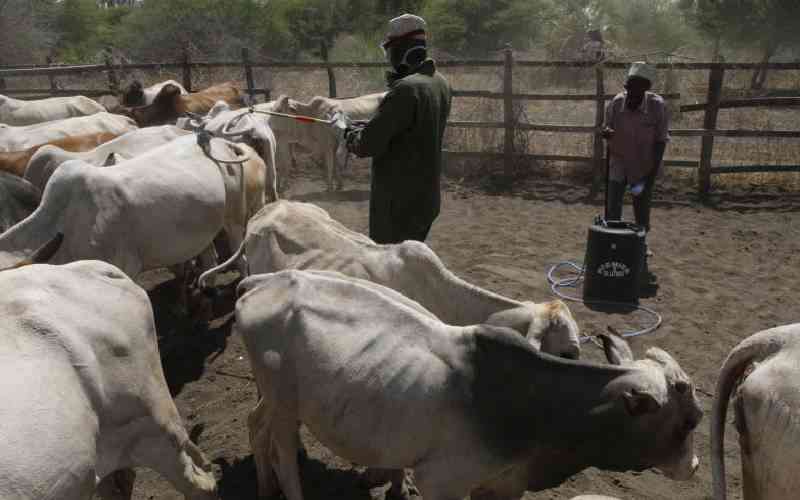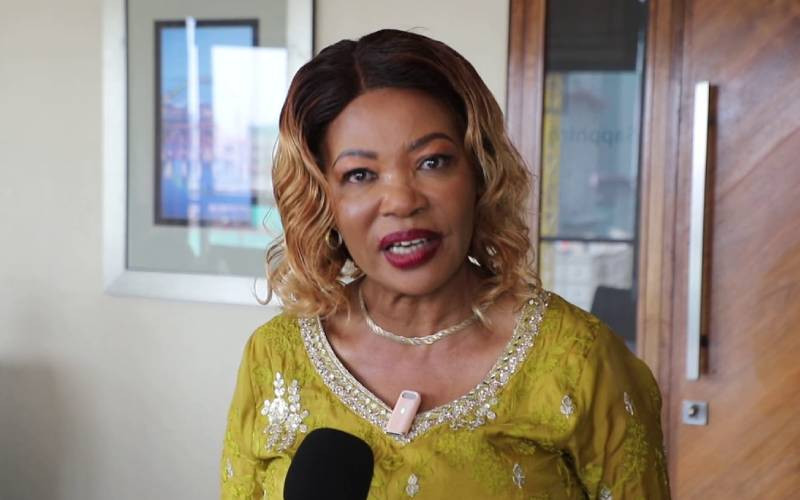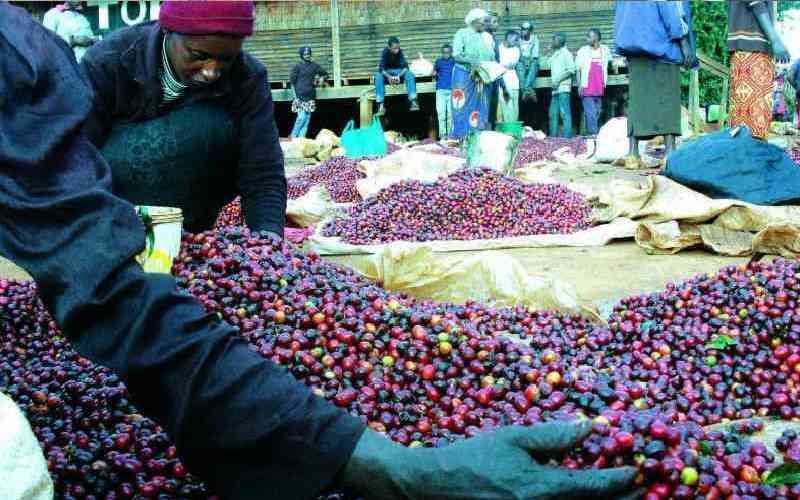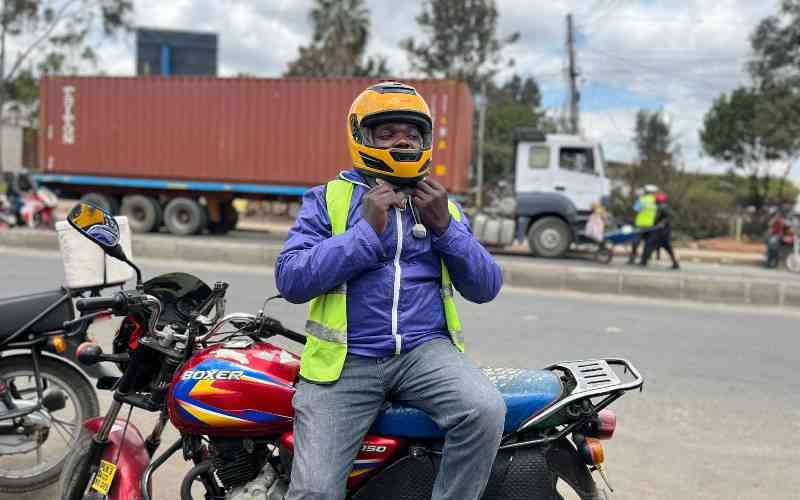
A herdsman sprays cattle with insecticide to prevent tsetse fly infestation during the Kenya Tsetse and Trypanosomiasis Eradication Council visit to tsetse fly-prone areas in Kina, Isiolo county. [File, Standard]
Kenya loses an estimated $143 million each year due to the impact of tsetse flies and trypanosomiasis.
This disease poses a significant threat to livestock and agricultural productivity, particularly in the rangelands, where over 70 per cent of the country’s livestock is raised.
Kenya is one of 38 African countries affected by the tsetse fly, with about 23 per cent of its land area infested, significantly impacting rural livelihoods and national food security.
Agriculture Cabinet Secretary Mutahi Kagwe, urges experts and scientists to collaborate and find lasting solutions to the tsetse and trypanosomiasis challenges that have plagued Africa for over a century.
He emphasizes that the impact of this disease is felt across Sub-Saharan Africa, and it is crucial to work together to address it, as the challenge transcends boundaries, sectors and disciplines.
“By freeing our rangelands from the tsetse menace, as a country we will contribute significantly to the Kenya Government’s Bottom-Up Economic Transformation Agenda (BETA) of increased livestock productivity in the priority value chains of dairy, beef and leather hence improved livelihoods,” Kagwe says.
“The agenda is in line with the Global Sustainable Development Goals and the Africa Agenda 2063 on sustainable development, poverty eradication and improved living standards that we all cherish as partners,” he adds.
Kagwe spoke during the 37th General Conference of the International Scientific Council for Trypanosomiasis Research and Control (ISCTRC), organised by the African Union Commission, through the African Union InterAfrican Bureau for Animal Resources (AU-IBAR), in partnership with the Kenyan government and the Kenya Tsetse and Trypanosomiasis Eradication Council (KENTTEC), held from September 15 to 19, 2025, in Nairobi.
This year’s theme, “Harnessing One Health Technologies and Innovations Towards Eliminating Trypanosomiasis in Africa,” underscores the urgent need for cross-sectoral solutions to address the disease, which remains one of Africa’s greatest constraints to socio-economic development.
Kenya free from sleeping sickness
Kagwe notes that Kenya has made significant progress in the fight against sleeping sickness and has been actively involved in efforts to eradicate tsetse flies and trypanosomiasis through the Pan-African Tsetse and Trypanosomiasis Eradication Campaign (PATTEC), a continental initiative coordinated by the African Union.
“We have made notable progress, and areas previously plagued by high tsetse and trypanosomiasis challenges can now support profitable agriculture,” he says.
On June 16, 2025, the World Health Organisation (WHO) declared Kenya free from Human African Trypanosomiasis, commonly known as sleeping sickness, as a public health problem. This milestone reflects the country’s sustained efforts in disease surveillance, diagnosis, treatment, and vector control, and marks significant progress in protecting communities from this once-deadly disease.
Stay informed. Subscribe to our newsletter
“This was made possible through the collaborative efforts of our Ministry of Health, the Ministry of Agriculture and Livestock Development, communities and development partners,” the CS explains.
AU-IBAR Director Huyam Salih, notes that human population exposed to the risk of trypanosomiasis was estimated at 6 million people in 2024.
“Human African Trypanosomiasis cases in 2024 were reported as 583, which is a drastic reduction of cases experienced earlier of 28,000 cases in 1999. The reduction reflects decades of coordinated surveillance, treatment innovation, and vector control efforts across endemic regions,” she says.
Dr Salih says that trypanosomiasis continues to rob millions of livestock-dependent communities of their livelihoods, deny employment to countless youth across our continent, and contribute to malnutrition and stunting among African children due to poor livestock health and reduced productivity.
“While we acknowledge the significant strides made in reducing sleeping sickness cases in recent years, we must not be complacent. The disease still inflicts untold suffering on many, and our mission is far from complete,” she says.
“My call to you today is clear, we must accelerate our efforts. Let us unlock the power of collaboration and innovation, guided by the One Health, recognising the deep interconnection between livestock production, ecosystem integrity, climate change, public health, and the persistent challenge of trypanosomiasis.”
Dr Salih acknowledges Kenya’s provision of office space for AU-IBAR in Westlands, Nairobi, and allocation of a three-acre parcel of land in Upper Kabete for the construction of office blocks, aimed at supporting AU-IBAR mission to advance the animal resources sector across Africa.
She warns that trypanosomiasis remains a major barrier to sustainable agriculture, rural development, and public health across many African countries.
Currently, 38 out of 55 African nations are affected by tsetse and trypanosomiasis, with an estimated 50 million cattle at risk. The disease causes the death of approximately 3 million cattle annually.
The direct economic losses, stemming from reduced meat and milk production, treatment expenses, and the cost of vector control, are estimated at $1.2 billion each year.
Beyond these immediate losses, the broader economic impact of trypanosomiasis on agricultural production in tsetse-infested regions is estimated at a staggering $5 billion annually. The disease also reduces draft power and livestock fertility, further threatening food security and undermining rural livelihoods across the continent.
Dr Salih cites the lack of synergy between the veterinary, medical, and environmental sectors as one of the major challenges, noting that this disconnect undermines sustainable and effective efforts to control and eliminate tsetse and trypanosomiasis.
Another key challenge is the inadequate and unsustainable funding for control programmes, which remain heavily reliant on short-term, project-based donor support. This dependency limits continuity and long-term planning.
Limited domestic investment in critical areas such as surveillance, vector control, and research, further hinderS sustained progress in the fight against tsetse and trypanosomiasis.







